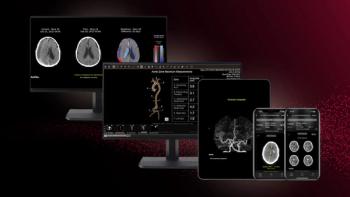
Clinical Parameters Help Detect Prostate Cancer
Detecting clinically significant disease among PI-RADS category 3 lesions may be improved by incorporating clinical parameters into risk stratification algorithms.
Incorporating clinical parameters into risk stratification algorithms may help clinicians detect clinically significant disease among PI-RADS category 3 lesions, according to a study published in the
Researchers from the University of Colorado in Aurora and Yale University in New Haven, Conn., sought to determine the frequency of clinically significant cancer (CSC) in Prostate Imaging Reporting and Data System (PI-RADS) category 3 (equivocal) lesions prospectively identified on multiparametric prostate MRI. They also wanted to identify risk factors (RFs) for CSC that may aid in decision making.
The imaging results of 977 men who underwent multiparametric prostate MRI and 342 who underwent MRI-ultrasound (US) fusion targeted biopsy were obtained for the trial; 474 lesions were retrospectively reviewed, and 111 were scored as PI-RADS category 3 and visualized using a 3-T MRI scanner. Multiparametric prostate MR images were prospectively interpreted by body subspecialty radiologists trained to use PI-RADS version 2. CSC was defined as a Gleason score of at least 7 on targeted biopsy. A multivariate logistic regression model was constructed to identify the RFs associated with CSC.
The results showed that 81 (73%) of the 111 category 3 lesions were benign; 11 lesions (9.9%) were clinically insignificant with a Gleason score of 6, and 19 lesions (17.1%) were clinically significant. On multivariate analysis, three RFs were identified as significant predictors of CSC:
• Older patient age
• Smaller prostate volume
• Abnormal digital rectal examination (DRE) findings
The risk of CSC for PI-RADS category 3 lesions were:
• 4% with 0
• 16% with 1
• 762% with 2
• 100% with 3
PI-RADS category 3 lesions for which two or more RFs were noted, such as age of 70 years or older; gland size 36 mL or smaller; or abnormal DRE findings, had a CSC detection rate of 67% with a sensitivity of 53%, a specificity of 95%, a positive predictive value of 67%, and a negative predictive value of 91%.
The researchers concluded that by incorporating clinical parameters into risk stratification algorithms, the ability to detect clinically significant disease among PI-RADS category 3 lesions may be improved and it may aid in the decision to perform biopsy.
Newsletter
Stay at the forefront of radiology with the Diagnostic Imaging newsletter, delivering the latest news, clinical insights, and imaging advancements for today’s radiologists.




























